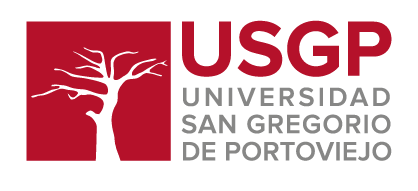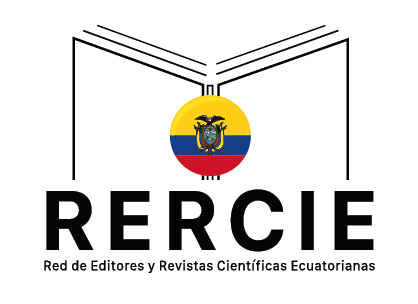Information wars in the post-Soviet media: infodemic and means of its neutralizing
DOI:
https://doi.org/10.36097/rsan.v1i44.1631Palabras clave:
infodemic, manipulative influence, information war, meme, fact-checkingResumen
The research focuses on the concepts of “infodemic”, “information war” and their modern transformations. In order to determine the theoretical basis of the work, inductive and deductive methods of analysis have been used; the method of interdisciplinary research has been involved for identifying the genesis, principles of structuring and specific characteristics of infodemic as a form of informational influence of a manipulative nature. The author’s BNA-analysis made it possible to determine the nature of information influences and the effectiveness of socially valuable performance as a measure to counteract information influences and a training method. It has been found that the interaction of different media and social communications: PR, advertising and journalism, makes it possible to increase the impact of information waves on society; infodemic is an example of such an intense impact. The problem of determining the algorithm, nature and means of combating information intrusions of a negative nature is the basis of the presented scientific studies. A number of means of counteracting the negative impact of infodemic and other information wars on the audience have been identified. A set of anti-infodemic means and an algorithm for their usage have also been presented.
Descargas
Referencias
Dawkins, R. (2006). The Selfish Gene: 30th Anniversary edition. Oxford, UK: Oxford University Press.
Eysenbach, G. (2002). Infodemiology: The epidemiology of (mis)information. American Journal of Medicine, 113(9), 763–765. https://doi.org/10.1016/s0002-9343(02)01473-0.
Gillmor, D. (2004). We the Media. Grassroots Journalism by the People, for the People. Sebastopol, CA : O'Reilly Media Inc.
Hristov, A. (2019). PR, Zhurnalistika i konkurentsiya za s'zdavaneto na mediyno soderzhanie [PR, Journalism and competition for the creation of media content]. 21st Sentury Media and Communications, 3, 17-21.
Kim, Y., Huang, J., & Emery, S. (2016). Garbage in, garbage out: Data collection, quality assessment and reporting standards for social media data use in health research, infodemiology and digital disease detection. Journal of Medical Internet Research. 18(2), Art. e41. https://doi.org/10.2196%2Fjmir.4738
Oxford English and Spanish Dictionary. (n.d.) Meme. Retrieved from https://www.lexico.com/definition/meme
Pavlyuk, L. (2019) Memes as markers of fakes and propaganda topics in media representations of the Russian-Ukrainian conflict. Bulletin of Lviv Polytechnic National University, Series: Journalistic sciences, 3(910), 87–94. https://doi.org/10.23939/sjs2019.01.087
Pocheptsov, G. G. (2017). Memetic War or In search of the Arithmetic of Mind. Retrieved from: https://ms.detector.media/mediaanalitika/post/20271/2017-12-24-memeticheskaya-voina-ili-v-poiskakh-arifmetiki-razuma/
Popova, T. (2020). Rappoport’s Mail: How Novorosiya Failed. Retrieved from: https://www.radiosvoboda.org/a/30648900.html
Popovych, V., Ragimov, F., Kornienko, V., Ivanova, I., & Buryk, Z. (2020). Development of social and communicative paradigm of public administration in the field of social networks. International Journal of Data and Network Science, 4, 319-328. https://doi.org/10.5267/j.ijdns.2020.6.001
Prosianyk, O. (2020). Linguistics: science – didactics – phyloshopy of language –methodology (discoursive and communicative aspect of the issue). Studia Methodologica, 50, 13-22. https://doi.org/0.25128/2304-1222.20.50.02
Prosser, M. (2006). Memetics — A Growth Industry in US Military Operations. Retrieved from: https://apps.dtic.mil/dtic/tr/fulltext/u2/a507172.pdf
Shandra, А., & Seely, R. (2019). The Surkov Leaks: The Inner Workings of Russia’s Hybrid War in Ukraine. RUSI Occasional Paper. Retrieved from https://rusi.org/publication/occasional-papers/surkov-leaks-inner-workings-russias-hybrid-war-ukraine
Starkova, G. (2018). Modern folklore and media literacy, points of contact. In: V. Ivanov & O. Voloshenyuk (Eds.), Proceedings of the 6th International Scientific and Methodological Conference "Practical Media Literacy: International Experience and Ukrainian Perspectives" (pp. 41-53). Kyiv, Ukraine: Tsentr Vil’noyi Presy, Akademiya ukrayinskoyi presy.
US Department of State. (2020). GEC Special Report: Russia’s Pillars of Disinformation and Propaganda. Retrieved from: https://www.state.gov/russias-pillars-of-disinformation-and-propaganda-report/
Zarocostas, J. (2020). How to fight an infodemic. The Lancet, 395(10225), 676. https://doi.org/10.1016/S0140-6736(20)30461-X
Zinenko, O. D. (2018). The “public event effect”: representation of cooperation of social and medial. Bulletin of the Lviv National University, Series: Journalism, 44, 260–269.
Zolotuhin, D. (2020). The Hack of Boris Rappaport. Part 1: Whose Ears Are Sticking Out. Retrieved from: https://ghall.com.ua/2020/06/11/vzlom-borisa-rapoporta-chast-1-chi-ushi-torchat



















